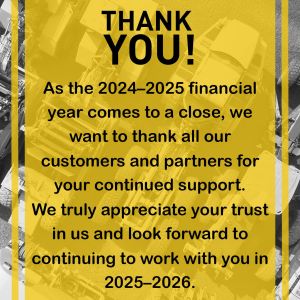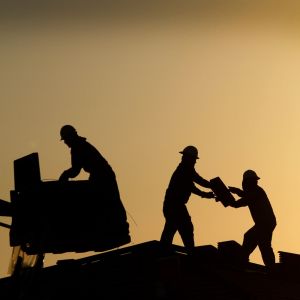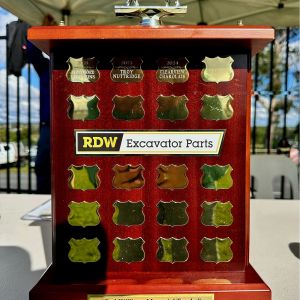Australia has recovered remarkably well from the economic downturn brought on by the actions around Covid. However, there is no time like the present, and don’t put off until tomorrow what you can do today, especially with end of financial year approaching, for two very good reasons. Prices on everything is about to go up and despite what was supposed to be the worst year since the great depression, many businesses have had a whopper of a year and have money to spend (and taxes to reduce). Read on to find out more.
Prices and inflation are about to increase. The Reserve Bank and Governments look at the economy through the rear vision mirror. So when they say that the forecast GDP drop (1.5% drop for this financial year) from Covid has now become an increase of 1.1% just in the March quarter, they are using backward looking tools such as Business Activity Statements. Insolvencies are also still half what they were pre-Covid (thanks to JobKeeper), which means there is some catch up coming over the next 6 months. They also say that inflation is at or near zero and have set interest rates also near zero – both which are true for the past while.
Because they don’t run businesses, what they don’t factor in is that there is a lag through the whole supply chain. Let’s use a product that affects our industry as a perfect example. 70% of the worlds steel comes from China. Two thirds of all of China’s iron ore comes from Australia, and over 80% of the iron ore we mine goes to China. Iron Ore is our largest export by far (35.9% of our total exports). The price of iron ore has jumped to 2-3 times their historic values over the past 6 months and sit at a spot price of about $200/tonne at present. However, this hasn’t flowed through in full yet because most materials supply is on forward contracts that are gradually expiring.
Further, due to supply, manufacturing and shipping delays, very little of this price rise has started to flow through to consumers of steel products in Australia. Most machinery is made predominantly using steel and metals, so both parts and machinery prices will inevitably have to increase in price. Whereas in the past lead time from order placement to arrival in Australia was 3-4 months, this has now blown out to 9-12 months in many cases and industries, and sometimes you can’t get supply at all.
Shipping costs have also increased 2-3 times, which now has a significant impact on the landed cost of ALL goods into Australia. Freight cost of a typical 20-foot container from a common Chinese port was $200-300USD in June 2019, $1,000-1,200 in June 2020, and is now around $2,500USD. A container of say retail products might have $10-20,000 of items in it, which means the shipping cost has increased from a negligible 1-2% to a substantial 12-25% of the landed cost. Many Australian companies in all industries were forward thinking enough to stock up on inventory, which is all well and good until the inventories get exhausted and need replenishment, as the public is now starting to see with for instance building products.
As most products we buy in Australia are imported, there is only one way prices can go. So whilst I am a strong advocate for only buying what you can afford, with interest rates so low and prices quite possibly increasing substantially, if you have had a good year, you should consider buying now, to save later. A purchase before end of financial year will reduce your tax for this year, so you can put it into something productive that will make you money over the coming year. You will save by buying to beat the inevitable price rises.
There is a second significant development in our economy that very few commentators have understood (with the notable exception of Terry McCrann). For 44 years, we have been talking about Australia’s Current Account Deficit (CAD), so much so it has become accepted that we’d always have a Deficit. However, for the past 8 quarters, Australia has recorded a growing Current Account surplus. Our annualised CAD (sic) surplus is now around $50 billion per year, whereas we used to have a deficit of that magnitude.
So why does this matter and what does it mean? After 45 years of importing capital (debt and equity through foreign investment), we are suddenly exporting more to the world than we are importing. This surplus is due firstly to exceptional mining exports proudly supported by agriculture, but the surplus is also boosted by low interest rates (meaning the monetary cost of all the $1 trillion net debt we have to overseas countries is costing less to pay).
The problem of course is that we still have our eggs in pretty much one basket. China accounts for 43% of our overall exports, and recent events like tariffs on barley, wine etc is a strong indicator that they don’t want to continue transferring of about $200 billion per year to us. A further 35% of our exports go to other Asian nations, which means that 78% of our exports are within this geographic region, beholden to the same forces.
So whilst having a current account surplus is a good thing, as a nation we need to make sure that this is used for good long term benefits, such as actually repaying debt and investment (not on spending). Our economy hinges on continued strong mining exports with prices that fluctuate substantially and longer term our main trading partner is funding mining development overseas. The mining gravy train won’t last forever.
The second part is of course low interest rates, which have been artificially low due to central bank manipulation. Whilst this has worked so far to stop the collapse of economies, the interest rates that are actually charged in the real world are influenced by inflation. The Biden Government in the USA has just gone on a stimulation program which increases the Government subsidies to the economy 3 times greater than the recent record set by the Trump administration. Official inflation in the US is already showing 4-5%. The supply chain price increases mentioned earlier are quickly going to fuel inflation in Australia to similar levels. When inflation rises, so too do interest rates.
There can not be many people that seriously believe interest rates can stay as low as they are for very long. As per last months newsletter (View Here), there is little justification for sustainable wage increases. So good business (and personal finance) advice would be to buy any products that will be income producing for you now (before price rises), and then use the profit from that investment to pay down debts ASAP. It is not far fetched that a small interest rate increase of 2% (on real interest rates, not the official RBA ones) will occur over the next year. For many borrowers, that will mean a doubling in interest costs. Not sure how many people have factored that into their budgets, but at a minimum it will mean reduced discretionary spending, and a slowing of our economy.
By understanding these forces, we can act to limit and control their effects. Beat price rises when buying income producing assets to improve your profitability and competitiveness, then use that income to squirrel down any debts.
As always, onwards and upwards!
Fred Carlsson
General Manager



